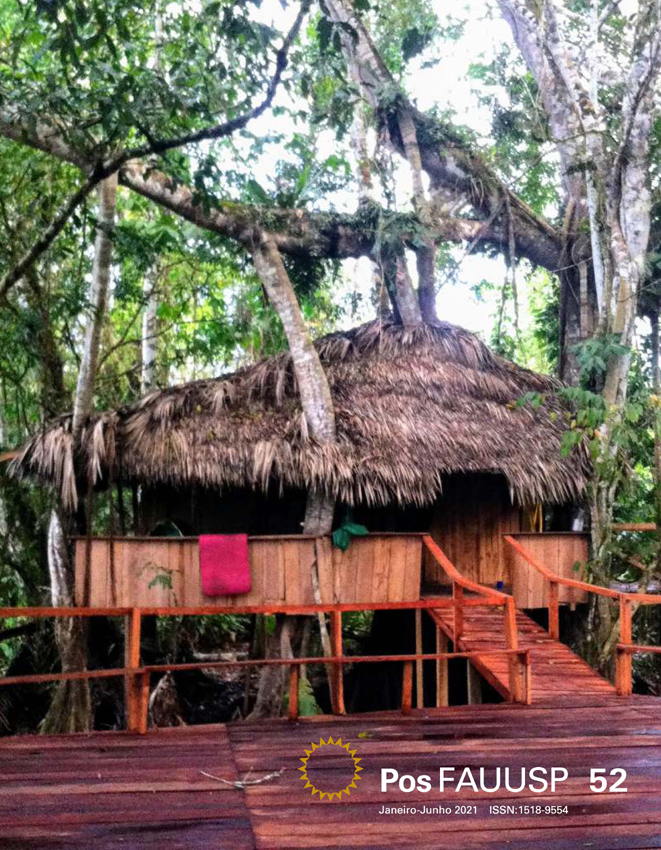Embody Moema: the female body in the time-space of (re) production of Brazil as a Colony
DOI:
https://doi.org/10.11606/issn.2317-2762.psrevprogramapsgradarquiturbanfauusp.2021.176939Keywords:
Moema, Female body, Modern EraAbstract
Moema is an iconic character in the epic poem “Caramuru” written by José de Santa Rita Durão in 1781. This body that transforms itself continuously in many artistic manifestations, whether in literature, in historical narratives or in its manifestations in painting and sculpture during nineteenth century, has traces of the theme of Indianism, as well as of death in water, romantic death and the theme of the female nude. All of them are related with issues that concern aspects of the brutal process of (re) production of Brazil as a colony. Corporear Moema is an invitation to think about the female body and dynamics proper to the transition to the Modern Era. The critical analysis brings a rereading of the character to debate the role of the female body in the transition to capitalist society.
Downloads
References
BARROS, José d’Assunção. A construção social da cor: diferença e desigualdade na formação da sociedade brasileira. Petrópolis: Vozes, 2009.
BIRON, Berty R. Caramuru: transposição do Velho para o Novo Mundo. Navegações, Porto Alegre, v. 3, n. 1, p. 41-47, jan./jun. 2010.
CANDIDO, Antônio. Literatura e sociedade: estudos de teoria e história literária. São Paulo: Ed. Nacional, 1985.
COELHO, Mauro Cezar. A construção de uma lei: o diretório dos índios. Revista IHGB, a. 168 (437), 2007, Rio de Janeiro, p-29-48.
DURÃO, José de Santa Rita. Caramuru: poema épico. Rio de Janeiro: Fundação Biblioteca Nacional. Disponível em: <http://objdigital.bn.br/Acervo_Digital/Livros_eletronicos/caramuru.pdf>. Acesso em: setembro de 2017.
DAVIS, Angela. Mulheres, raça e classe. São Paulo: Boitempo, 2016.
FEDERICI, Silvia. Calibã e a bruxa: mulheres, corpo e acumulação primitiva. São Paulo: Elefante, 2017.
FOUCAULT, Michel. Microfísica do Poder. Rio de Janeiro: Paz e Terra, 2017.
MACHADO, R. Por uma genealogia do Poder. In: FOUCAULT, Michel. Microfísica do Poder. Rio de Janeiro: Paz e Terra, 2017. P.7-34.
MOSELEY, Christopher (ed.). Atlas of the World’s Languages in Danger. Paris: UNESCO Publishing, 2010. Disponível em: <http://www.unesco.org/culture/en/endangeredlanguages/atlas). Acesso em abril de 2018.
MOURA, Mariluce. Uma guerra na Bahia. Entrevista com Luís Henrique Dias Tavares. Revista Pesquisa Fapesp n 119, São Paulo, 2006. p.12-17.
RAMINELLI, Ronald. Eva tupinambá. In: PRIORE, Mary Del (orgs.). História das Mulheres no Brasil. São Paulo: Contexto, 1997. P.11-44.
ROCHA, Carolina. O sabá do sertão: feiticeiras, demônios e jesuítas no Piauí colonial (1750-1758). Jundiaí, Paco Editorial: 2015.
Downloads
Published
Issue
Section
License
Copyright (c) 2021 Iaci d Assunção Santos

This work is licensed under a Creative Commons Attribution-NoDerivatives 4.0 International License.

This work is licensed under a Creative Commons Attribution 4.0 International License.
DIADORIM - Diretório de Políticas Editoriais












